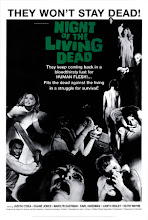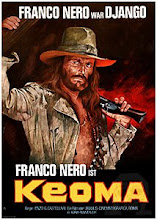 Werewolf In A Girls' Dormitory
Werewolf In A Girls' Dormitory
Italy/Austria 1961 b&w
aka Lycanthropus, Ghoul In A Girl's Dormitory, I Married A Werewolf, Monster Among The Girls, The Ghoul In School
Director “Richard Benson”/Paolo Heusch Writer “Julian Berry”/Ernesto Gastaldi
Cast Barbara Lass (Priscilla), Carl Schell (Dr. Julian Olcott), Curt Lowens (Director Swift), Maurice Marsac (Sir Alfred Whiteman)
 Our first film tonight is a strange one: Lycanthropus, an Italian horror film lensed in
Our first film tonight is a strange one: Lycanthropus, an Italian horror film lensed in
The same night Mary, one of the delinquent schoolgirls, sneaks over the walls to the sound of howling wolves and heavy breathing, and is found the next morning, her face frozen in a deathmask of terror and her body torn to pieces by a wolf – or is it SOMETHING ELSE?
 And who is responsible for the string of all-too human murders littering the school’s halls? Is it the blackmailed “Lord” Alfred, his glass-eyed henchman Walter, or his twisted hate-filled wife Sheena? Is it the new teacher, whose former experiments in lycanthropy – or WEREWOLFism – may have led him to experiment on himself? Is it the innocent-looking student Priscilla, whose burgeoning and highly inappropriate romance with Dr Olcutt doesn’t even curl a whisker on the rest of the faculty? Or is it… SOMEONE ELSE?
And who is responsible for the string of all-too human murders littering the school’s halls? Is it the blackmailed “Lord” Alfred, his glass-eyed henchman Walter, or his twisted hate-filled wife Sheena? Is it the new teacher, whose former experiments in lycanthropy – or WEREWOLFism – may have led him to experiment on himself? Is it the innocent-looking student Priscilla, whose burgeoning and highly inappropriate romance with Dr Olcutt doesn’t even curl a whisker on the rest of the faculty? Or is it… SOMEONE ELSE?
 As a European horror film it barely rates, substituting all of the genre’s familiar supernatural elements with a barrage of pseudo-scientific babble. It works much better viewed as a ghoulish mystery in the Edgar Wallace tradition, one seething with corruption, blackmail and omnipresent intrigue. “Judgment is for God alone,” the solemn headmaster tells the girls, so for once I’ll keep my final analysis to myself. But if I WERE God, I would certainly keep those teachers on a leash. And that’s the final red herring I’ll throw out – time to take the beast for a walk with Werewolf In A Girl’s Dormitory.
As a European horror film it barely rates, substituting all of the genre’s familiar supernatural elements with a barrage of pseudo-scientific babble. It works much better viewed as a ghoulish mystery in the Edgar Wallace tradition, one seething with corruption, blackmail and omnipresent intrigue. “Judgment is for God alone,” the solemn headmaster tells the girls, so for once I’ll keep my final analysis to myself. But if I WERE God, I would certainly keep those teachers on a leash. And that’s the final red herring I’ll throw out – time to take the beast for a walk with Werewolf In A Girl’s Dormitory.
USA/Philippines 1971 colour
aka The Beast
 Director/Writer Eddie Romero Producers John Ashley, Eddie Romero Executive Producers
Director/Writer Eddie Romero Producers John Ashley, Eddie Romero Executive Producers
Beverly Miller, David J. Cohen, [uncredited] Roger Corman
Cast John Ashley (Joseph Langdon), Mary Wilcox (Julia), Leopoldo Salcedo (Inspector Santos), Eddie Garcia (Det. Lt. Campo), Ken Metcalfe (Earl Rogers), Vic Diaz (Satan), Andres Centenera (Blind Man)
Next is a werewolf film from the
 John Ashley, a fresh-faced B-star of the Fifties likened to a delinquent Texan version of Elvis, spent close to ten years of his career’s downhill slope in the
John Ashley, a fresh-faced B-star of the Fifties likened to a delinquent Texan version of Elvis, spent close to ten years of his career’s downhill slope in the
 Being ageless Evil itself, Langdon/Rogers can peer ino the blackest of hearts and smell the most impure of intentions, even in his “wife” who falls in love with the damaged moral paradox that no longer resembles her “husband”. His condemned soul must also go, for a reason never made clear, through a physical transformation into a wild beast, and here’s where the threadbare production values catch up with the film’s ambitious intentions. Ashley’s new look is laughable in a film without cheap laughs, and with his grey plaster features, old man’s eyebrows and black bouffant bouncing on his cowboy shirt, he resembles country singer Merle Haggard, only… well, more haggard.
Being ageless Evil itself, Langdon/Rogers can peer ino the blackest of hearts and smell the most impure of intentions, even in his “wife” who falls in love with the damaged moral paradox that no longer resembles her “husband”. His condemned soul must also go, for a reason never made clear, through a physical transformation into a wild beast, and here’s where the threadbare production values catch up with the film’s ambitious intentions. Ashley’s new look is laughable in a film without cheap laughs, and with his grey plaster features, old man’s eyebrows and black bouffant bouncing on his cowboy shirt, he resembles country singer Merle Haggard, only… well, more haggard.
 The animalistic Langdon goes on the prowl through the back alleys of
The animalistic Langdon goes on the prowl through the back alleys of
 Some viewers find Eddie Romero’s Filipino horrors slow, preposterous or just plain old and clunky. I personally love his directorial style, which can only be described as classically lowbrow yet enjoyably pretentious. Romero’s literate dialogue has Ashley engage in endless philosophical debates about the nature of evil with the chubby countenance of Satan, played by Vic Diaz, at his greasy best shrouded in sulphur-yellow mist, who uses Langdon as his pawn to awaken the latent evil in others.
Some viewers find Eddie Romero’s Filipino horrors slow, preposterous or just plain old and clunky. I personally love his directorial style, which can only be described as classically lowbrow yet enjoyably pretentious. Romero’s literate dialogue has Ashley engage in endless philosophical debates about the nature of evil with the chubby countenance of Satan, played by Vic Diaz, at his greasy best shrouded in sulphur-yellow mist, who uses Langdon as his pawn to awaken the latent evil in others.
 Following their hugely successful
Following their hugely successful






















































































No comments:
Post a Comment